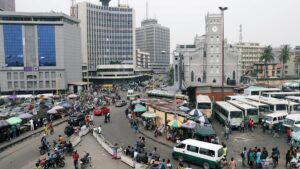In yet another review of the country’s macroeconomics, Kenya’s Central Bank has held the benchmark lending rate at 9 per cent, meaning banks in the country will continue giving loans with a maximum interest rate of 13 per cent.
This is under the Banking Act which caps lending rates at four percentage points above the CBK rate.
The decision was reached on Monday by CBK’s decision making organ-Monetary Policy Committee (MPC), which meets every two months to review the outcome of its previous policy decisions and recent economic developments.
The meeting was held against a backdrop of domestic macroeconomic stability, sustained optimism on the economic growth prospects, improving weather conditions in most parts of the country and increased uncertainties in the global financial markets.
This is the sixth time the MPC is retaining the benchmark rate at nine per cent after bringing it down from 9.5 per cent in July last year.
READ:Why Kenya’s Central Bank has retained minimum lending rate at 9%
The latest review comes even as month-on-month overall inflation rose to 6.6 per cent in April compared to 4.4 per cent in March, mainly reflecting increases in food prices attributed to depressed supply of vegetables and other fast.
Chaired by CBK governor Patrick Njoroge, the committee said: “inflation expectations remained well anchored within the target range but there is need to remain vigilant on possible spillovers of recent food and fuel price increases.”
The committee further noted that the economy was operating close to its potential.
“The MPC concluded that the current policy stance remains appropriate, and will continue to monitor any perverse response to its previous decisions,” Njoroge said, “The MPC will continue to closely monitor developments in the global and domestic economy, and stands ready to take additional measures as necessary.”
Inflation
Food inflation rose to 7.7 per cent in April from 2.9 per cent in March. However, non-food-non-fuel inflation remained below 5 per cent, indicating that demand pressures and the spillovers of the rise in food and fuel prices were muted.
“Overall inflation is expected to remain within the target range in the near term largely due to expectations of lower food prices following improving weather conditions, and lower electricity prices with the reduced usage of expensive power sources. Additionally, a timely release of maize stocks from the Strategic Grain Reserve will support the stability of food prices,” Njoroge said.
Forex and current account
On the other hand, the foreign exchange market has remained stable supported by the narrowing of the current account deficit to 4.5 per cent of GDP in the 12 months to April 2019 from 5.5 per cent in April 2018, CBK notes.
This reflects resilient performance of exports particularly horticulture and coffee, strong diaspora remittances, and higher receipts from tourism and transport services. Additionally, growth in imports slowed mainly due to lower imports of food. The current account deficit is expected to narrow to 4.8 per cent of GDP in 2019 from 5.0 per cent in 2018.
The government successfully issued a USD2.1 billion Eurobond in May, with a performance rate of 452 percent and favourable pricing. This reaffirmed investors’ confidence in the Kenyan economy.
Consequently, foreign exchange reserves rose to an all-time high of US$10.1 billion (6.4 months of import cover), and continue to provide adequate cover and a buffer against short-term shocks in the foreign exchange market.
Credit market
Private sector credit grew by 4.9 per cent in the 12 months to April, compared to 4.3 per cent in March, CBK data indicate.
Strong growth in credit to the private sector was observed in manufacturing (7.9 per cent); trade (8.4 per cent); finance and insurance (13.3 per cent); and consumer durables (16.4 per cent).
“Private sector credit growth is expected to continue to strengthen in the remainder of 2019,” Njoroge noted.
The private sector has experienced constrains in the credit market since the capping of interest rate commenced in 2016.
However, the recent rollout of innovative credit products, particularly those targeting micro small and medium enterprises (MSMEs) are expected to drive lending to this sector.
READ ALSO:Is Stawi Kenya’s biggest informal banks’ merger?
“The Committee looks forward to an assessment of the initial impact of these products,” the governor said.
Banking sector
The banking sector remains stable and resilient, according to the regulator where average commercial banks’ liquidity and capital adequacy ratios stood at 51.0 per cent and 18.3 per cent, respectively, in April.
The ratio of gross non-performing loans (NPLs) to gross loans stood at 12.9 per cent in April compared to 12.8 per cent in February, reflecting increases in NPLs mainly in the personal, household, real estate and manufacturing sectors.
Banks have continued with mitigation measures, including enhanced recovery efforts. Additionally, prompt settlement of delayed payments by government and private sector entities is expected to curtail a further increase in NPLs and support economic growth.
The economy
The economy recovered strongly in 2018, with real GDP growth increasing to 6.3 per cent from 4.9 per cent in 2017. This reflected a strong recovery in agriculture, manufacturing, and a buoyant services sector, particularly trade, information and communication, accommodation and restaurants, transport and storage, and finance and insurance.
Leading indicators of economic activity show that growth remained resilient in the first quarter of 2019, despite the delayed onset of the long rains. Growth in 2019 is expected to be supported by agricultural production, robust growth of MSMEs and the service sector, increased foreign direct investment and a stable macroeconomic environment.
However, the economy could be affected by the rise in international oil prices, risk of insufficient long rains and concerns on the likely implications of global developments on Kenya’s exports.
ALSO READ:Global oil prices pile pressure on Kenya’s economy
Global growth is expected to slow down in 2019, largely due to the escalation of trade tensions between the U.S. and China, increased uncertainties over the nature of Brexit, and the pace of normalization of monetary policy in the advanced economies.
“These developments may result in increased volatility in the global financial markets,” governor Njoroge said.











